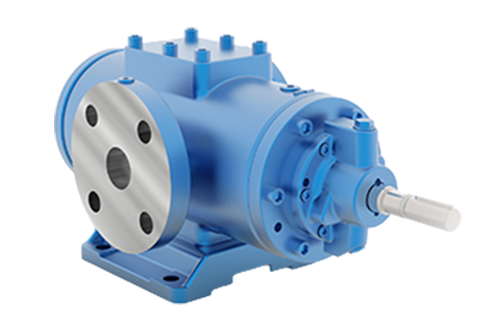Three Screw Pumps
Menu
Working Principle
- One Power screw and two Idler screws running in the three precision bores in the housing or liner
- Profiled Screws form a liquid tight seal between the threads
- As the screws rotate, cavities are formed, where liquid gets trapped and conveyed from suction chamber to discharge chamber
- The power rotor does not rotate the idlers. The hydraulic forces acting on screw flanks turn the idlers without torque thus reducing the friction
- The idlers simply roll over the root diameter of power screw and float freely in housing/liner bores
- A balance piston on Power rotor takes care of axial thrusts
- Ball bearing is only for axial positioning of Rotor and safer operation of mechanical seal

Benefits
- High Reliability & long Service life
- Lowest Total Cost of Ownership
- High Efficiency
- Self Priming
- Lowest Maintenance Cost
- Ease of Installation & Commissioning
- Smooth Operation
- Low Noise & Vibration
- Excellent Suction Lift
- Flexibility of Use and Wide range of Liquids and Viscosities
- Wide range of Flows and Pressures
- High Speed Capability
- Axial Flow – no churning, chewing or shearing
- Hydraulic balancing of forces to eliminate need for any bearings
Applications
- Loading
- Unloading
- Transfer
- Forwarding
- Fuel Firing
- Sealing
- Lubrication
- Cooling
- Governing
- Jacking Oil
- Circulation
Maximum Performance Data
Capacity
upto 2835 lpm
Diff. Pressure
upto 100 bar
Operating Parameters
Viscosity
From 3 cSt to 50,000 cSt
Fluid Temperature
upto 200 deg. Centigrade
Material of Construction
Casing Options
Cast Iron / Cast Steel / Fabricated / SG Iron
Casing Insert Options
Aluminum / No Casing insert
Screws
Alloy Steel
Sealing Options
Gland Packing / Mechanical Seal
Construction Features
Bearing Options
Internal / External ball bearing
Jacketing Options
Front Cover / Gland Cover / Casing / Foot
Mounting Options
Horizontal Foot / Horizontal Flange / Vertical Pedestal / Vertical Tank
Relief Valve Options
Built-in / Line Mounted
